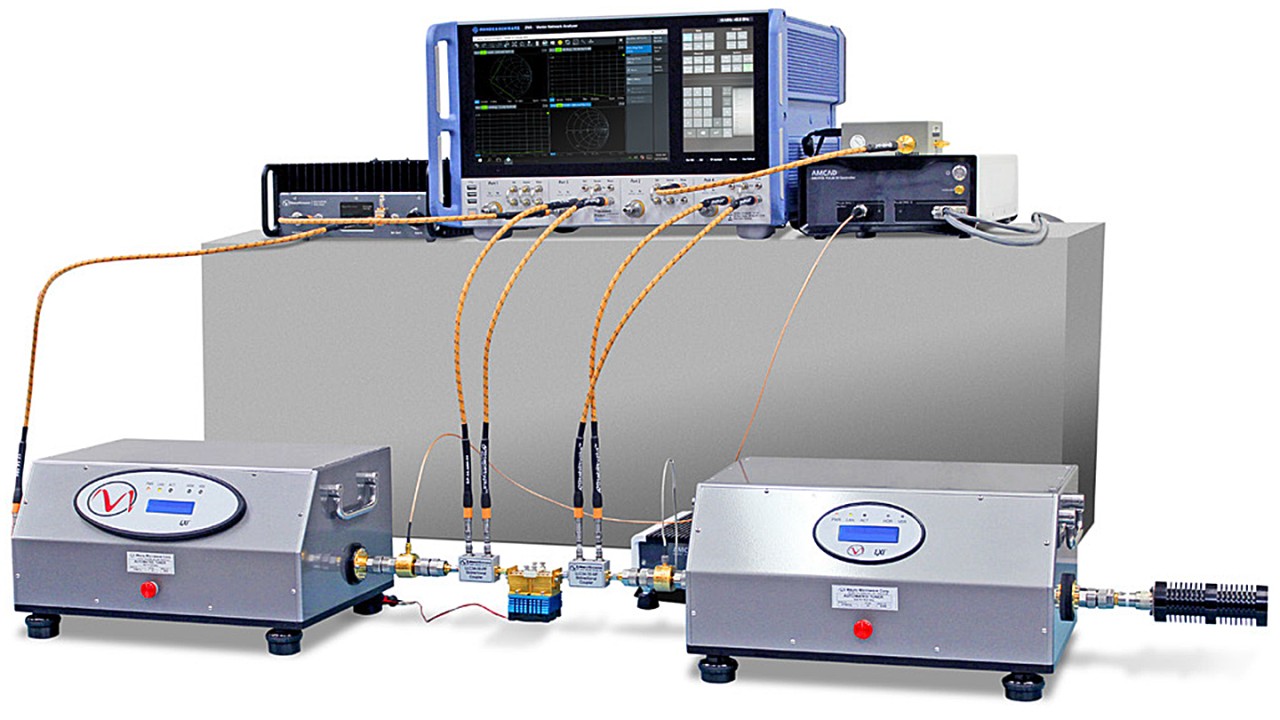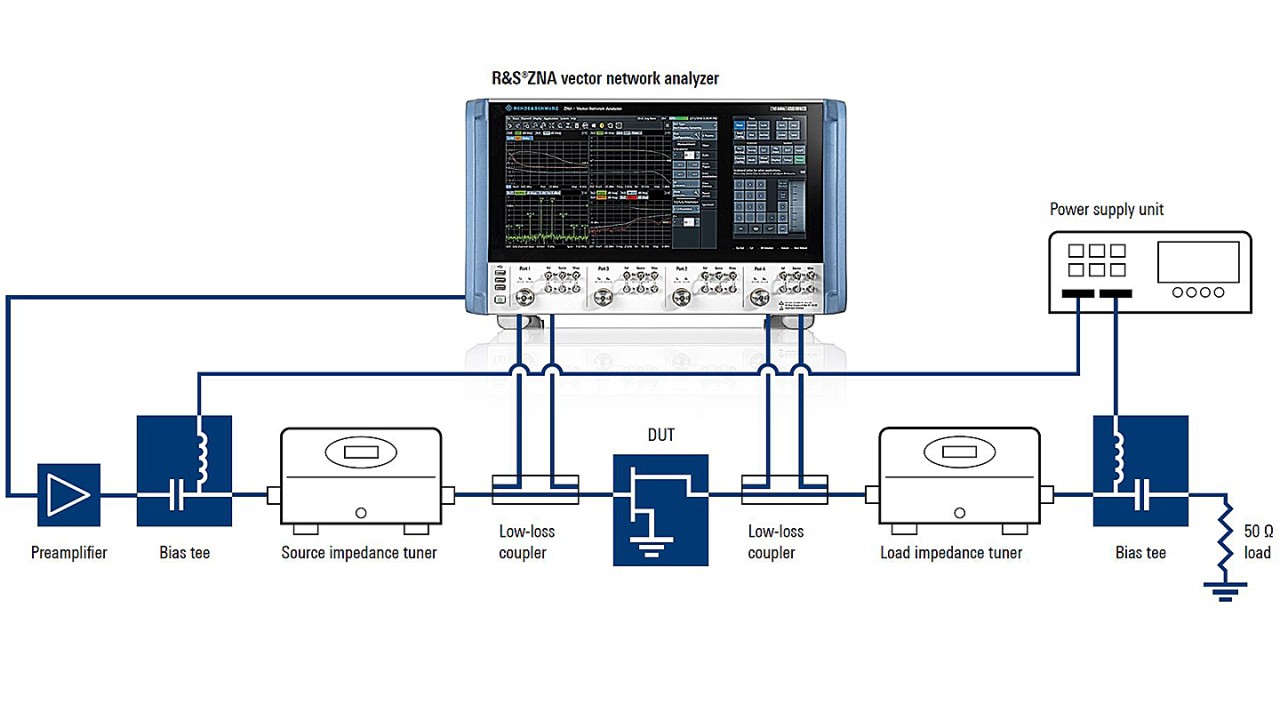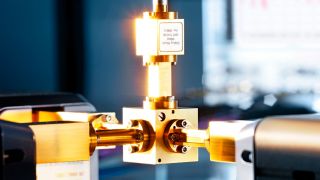Application
All parameter values of interest such as the reflection coefficients Γ on the input and output of the amplifier, input power, output power, gain, efficiency and power added efficiency can be derived from the measured wave quantities (amplitude and phase). The setup also enables a look into the tuners to accurately measure and control the respective impedances as presented to the DUT.
The setup can be easily enhanced to an active or hybrid load pull system or a combination of active and passive load pull. This extends the available tuning range at the DUT reference plane by injecting an additional, phase-coherent signal. It allows characterizing very low impedance devices over a wide range of impedances. This technique is also used if harmonic load pull is needed for enhanced device characterization and extracting complex DUT models.
Supported signal types often include CW and pulsed CW. Pulsed signals are essential for raw-die and on-wafer measurements to avoid temperature variations during the test due to self-heating of the device.
Rohde & Schwarz is collaborating with leading industry partners Focus Microwaves and Maury Microwave to offer turnkey load pull system solutions.
See also: www.rohde-schwarz.com/product/zna








